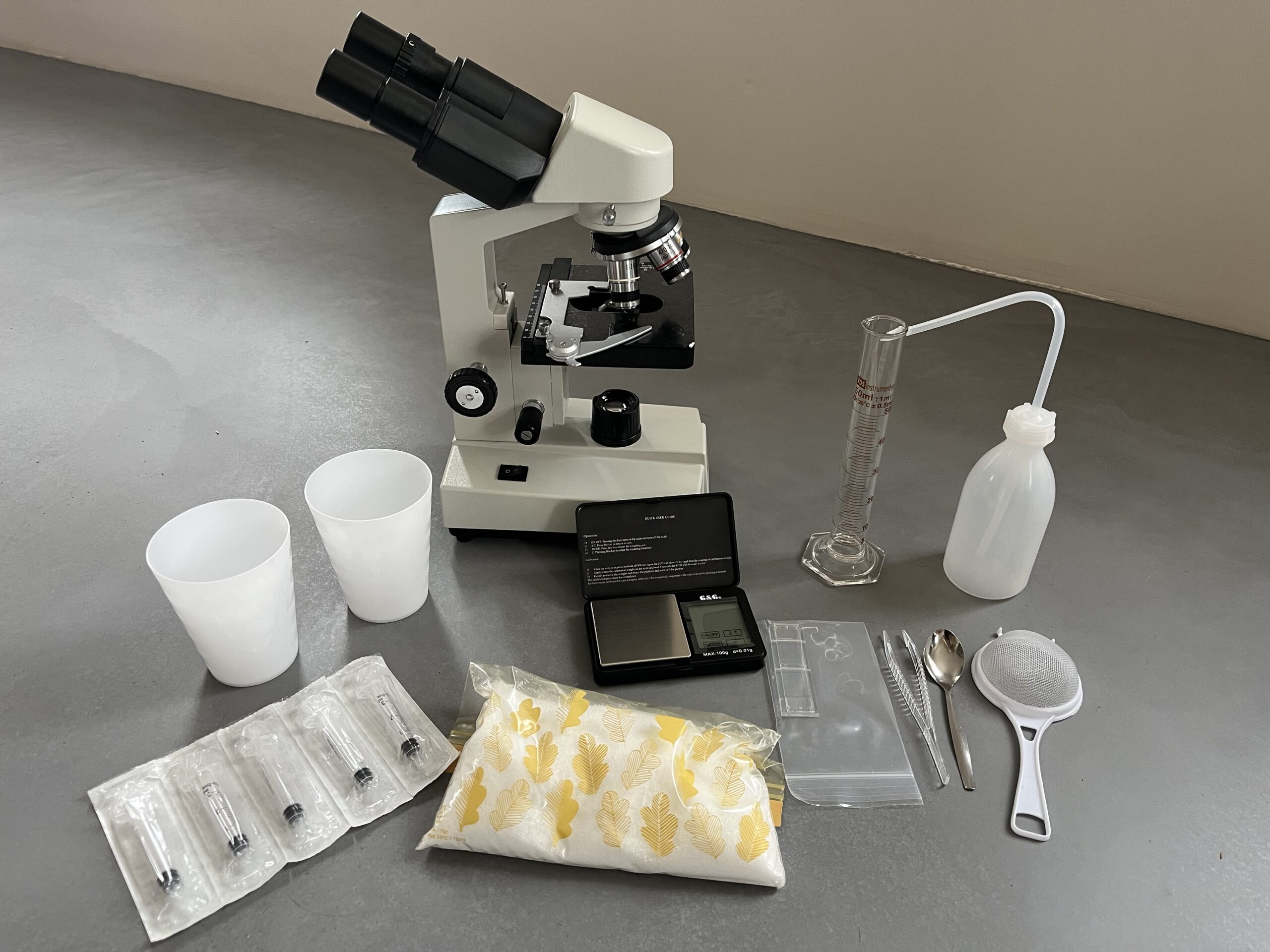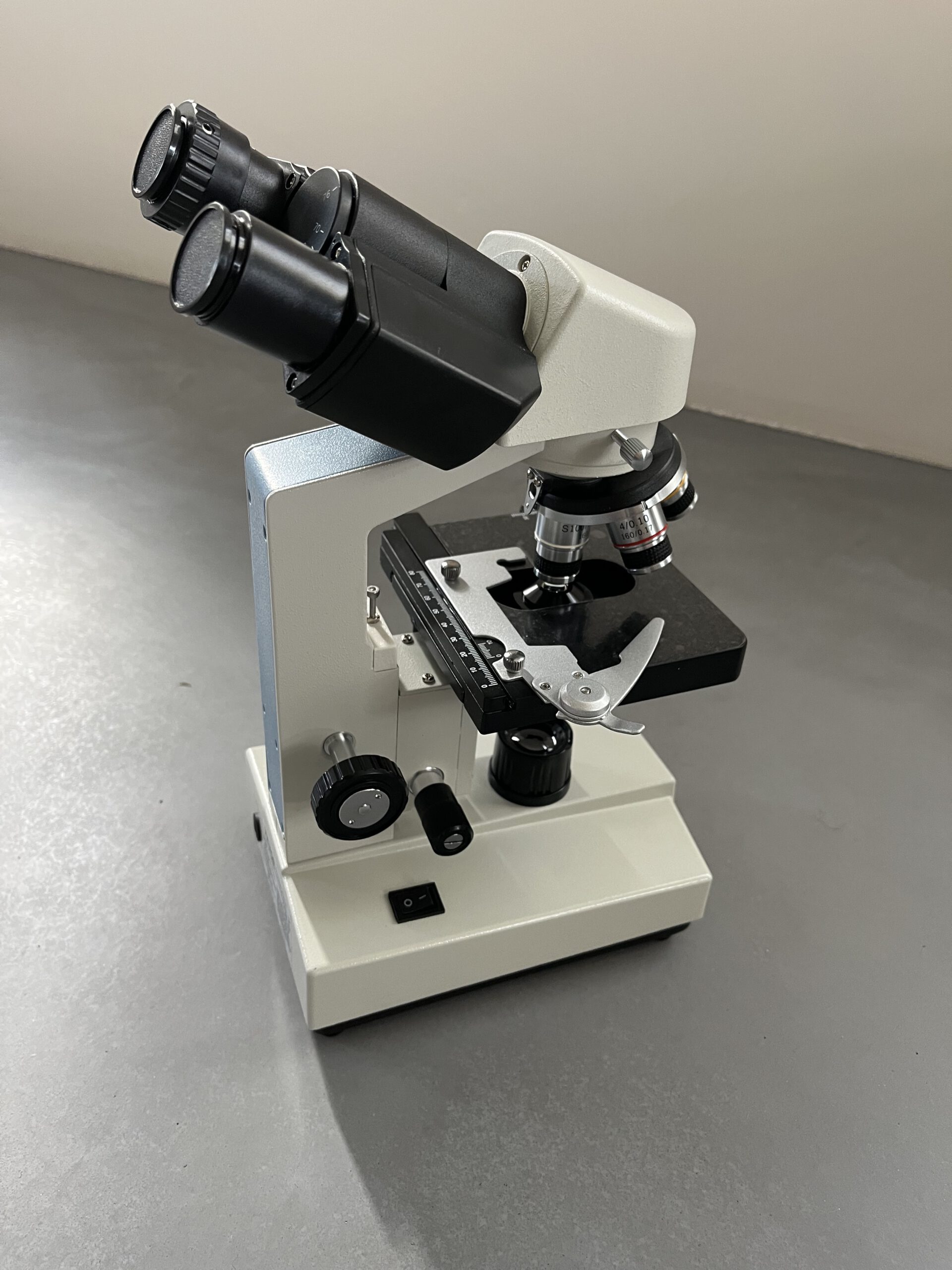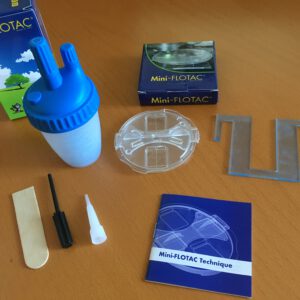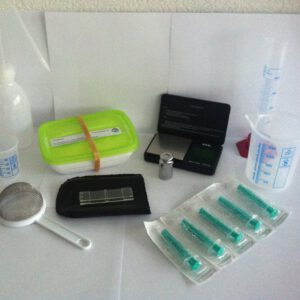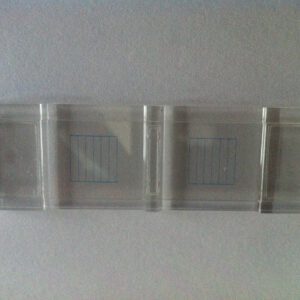Professional binocular microscope & FEC test kit
€ 369,00
A complete package for your fecal egg counts (FEC) testing at home:
1 The Professional binocular microscope has bright, dimmable light and a very sharp image. Recognizing worm eggs is very easy even if you new with FEC testing. Fecal Egg Counts (FEC) with McMaster counting chamber with 100x magnification and specially with this microscope also 250x magnification.
2 Material packet with supplies for the FEC preparation.
Includes free instruction booklet for doing equine manure testing at home. If you prefer to receive the instruction booklet for sheep & goats, please specify in the order notes.
Microscope specifications
This Professional binocular microscope offers an exceptionally clear image, making it perfect for FEC examination and other veterinary applications. The simple settings allow you to precisely count a column of the McMaster counting chamber at 100x magnification. For additional detail viewing, even magnification up to 250x is possible.
Key features:
✔ Crystal-clear image – Suitable for accurate manure examination
✔ Binocular design – Comfortable and soothing to the eyes, ideal for prolonged use
✔ Magnification up to 250x – For razor-sharp detail in FEC examination. For other examinations using a microscope slide, the maximum magnification is 2500x.
✔ Easy adjustment – Perfectly matched to the McMaster and Mini-FLOTAC counting chamber
✔ Mobile phone holder – Easily take microscope photos
Technical Specifications:
- Magnification: 100x – 2500x
- Eyepieces: 2 eyepieces with 10x magnification and 2 eyepieces with 25x magnification
- Objectives: Four DIN lenses (4x, 10x, 40x, 100x) – Achromatic
- Cross Table: With Nonius scale & large range
- Focus system: Coarse and fine adjustment
- 360° swivel head – Comfortable viewing from any angle
- Lighting: Very bright, with dimmer
- Capacitor: Abbe N.A. 1.25
- Power supply: 220V/240V
- Weight: 3.0 kg
- Warranty: 1 year
Includes:
✔ 5 slides & 100 coverslips
✔ Small accessories to prepare specimens
✔ Immersion oil
✔ English manual
McMaster test kit
Complete package for FEC testing according to the McMaster method:
- McMaster-counting-slide
- Precision scale
- 500 grams of flotation salt sufficient for about 40 tests
- Measuring cylinder 50 ml
- Two beaker glasses
- Tea strainer
- Squeeze bottle
- 5 Plastic syringes of 2 ml
FEC instruction booklet
You will receive a instruction booklet free of charge. By default, the horse instruction booklet is shipped. Want to do FEC counting for sheep & goats? If so, add it in the order notes.
FEC instruction booklet for horses, 21 pages A5.
Content:
- Worm management 3
- Parasites in horses 4
- General life cycle of worms 5
- Small redworm 6
- Large redworm 7
- Roundworm 8
- Tapeworm 9
- Pinworm 10
- Anthelmintics 11
- Deworming 12
- FEC settings for the microscope 13
- Fecal egg counts (FEC) method 14
- Identifying worm eggs in horses 16
- FEC testing result 19
- FEC testing plan 20
- Worm prevention tips 21
FEC instruction booklet for alpaca’s, 26 pages A5. NOT available in English, only in Dutch or German language.
Content:
- Worm management 3
- General life cycle of worms 4
- Barber’s pole worm (Haemonchus contortus) 5
- Nematodirus 6
- Trichostrongylus spp. 7
- Teladorsagia circumcincta 8
- Liver fluke (Fasciola hepatica) 9
- Large coccidia, E. Mac (Eimeria macusaniensis, Eimeria ivitaensis) 10
- Small coccidia (Eimeria) 11
- FAMACHA color chart 12
- Body Condition Score 13
- Anthelmintics 14
- Deworming 15
- Settings for the microscope 16
- Fecal egg counts (FEC) method 18
- Identify worm eggs 21
- FEC test results 24
- Worm prevention tips 26
FEC instruction booklet for sheep & goats, 18 pages A5.
Content:
- Worm management 3
- General life cycle of worms 4
- Barber’s pole worm (Haemonchus contortus) 5
- Nematodirus 6
- Trichostrongylus spp. 7
- Teladorsagia circumcincta 8
- Fasciola hepatica (Liverfluke) 6
- Eimeria (coccidia) 6
- FAMACHA color chart 7
- Anthelmintics 8
- Deworming 9
- Settings for the microscope 10
- Fecal egg counts (FEC) method 12
- Identify worm eggs 14
- FEC test results 17
- Worm prevention tips 18
